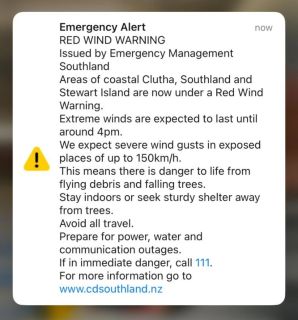
Launched by Minister Mark Mitchell in September, the PSN Cellular Network Visibility Service being delivered by NGCC and vendor, Hourua, consolidates network information from Spark and One NZ into one centralised digital system view creating a single reference point for emergency communications and operational teams.
With officials reporting up to 130 cell towers down across Southland at the peak of the storm, the Service has supported the decision-making of the NEMA and Emergency Management Southland operational planning teams by informing them in almost real time where cellular coverage is not available.
Geoff Welch, Environment Southland’s Team Leader GIS, said they were grateful for NGCC’s timely activation of the Cellular Network Visibility Service.
“We have been using it to check cell coverage potential for Welfare and Operational staff before they head out to an area, and also for our flood monitoring teams to check the disruption areas affecting the few remote sites that have lost telecom connection back to them. It has been very useful for both, as has the speed with which the team (NGCC and Hourua) were able to grant us access, which is vital in these response situations.”
NGCC’s Director, Steve Ferguson, said that when the call came, he was pleased to get NGCC’s experts together with Hourua to quickly create access to the Cellular Network Visibility service for Emergency Management Southland and NEMA.
“We scoped their requirements and provided same day activation of the Cellular Network Visibility Service and also trained people in their emergency management centres so they could quickly start integrating the cellular network information into their operational decision-making,” he said.
More PSN Cellular Services are supporting Southland’s emergency services
The fire, ambulance and police frontline responders working across Southland have been using two other Public Safety Network cellular services giving them a communications capability uplift. Thanks to a PSN SIM card in a frontline responder’s mobile phone or device, they can roam across both Spark and One NZ networks. This means that if one network is down, the phone will automatically connect to the other network if coverage is available.
The second service pushes emergency services’ cellular traffic to ‘the front of the queue’ for available coverage when cells sites have been congested or degraded so responders can continue to use their cellular devices to deliver support for communities.
